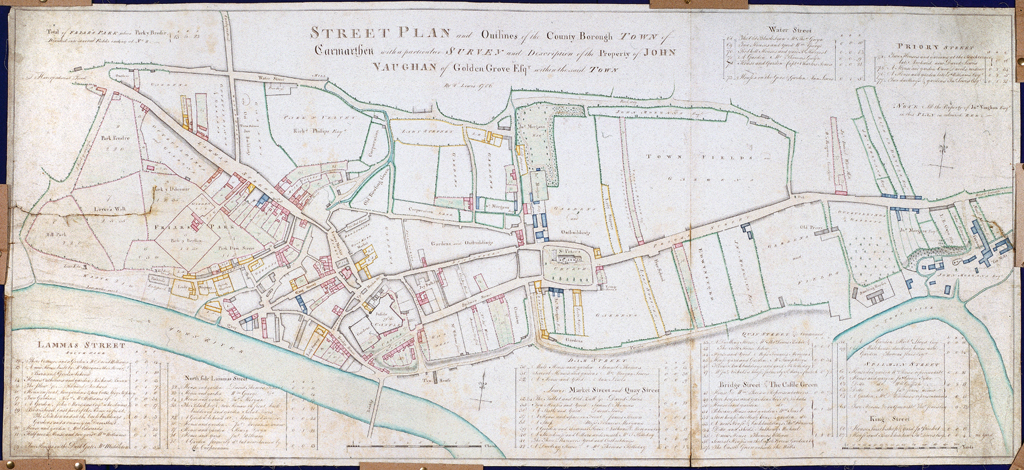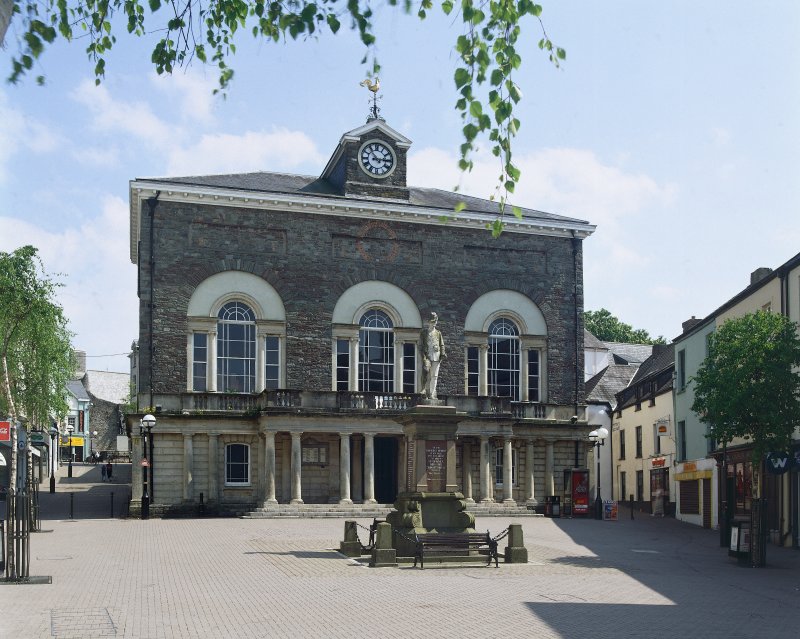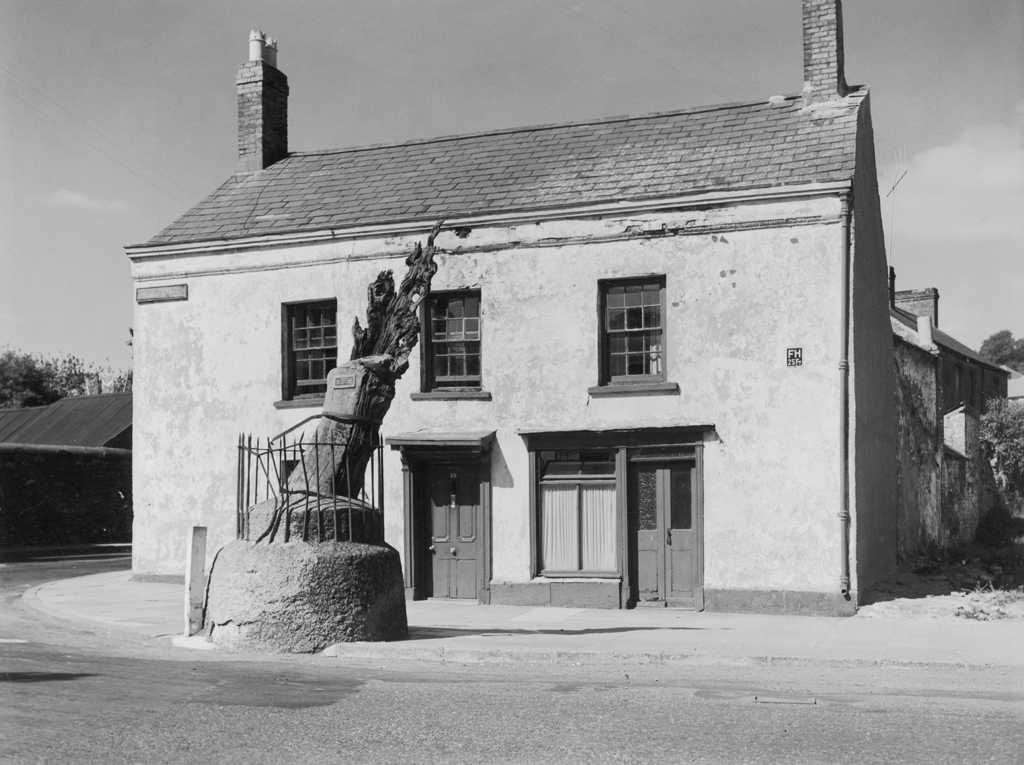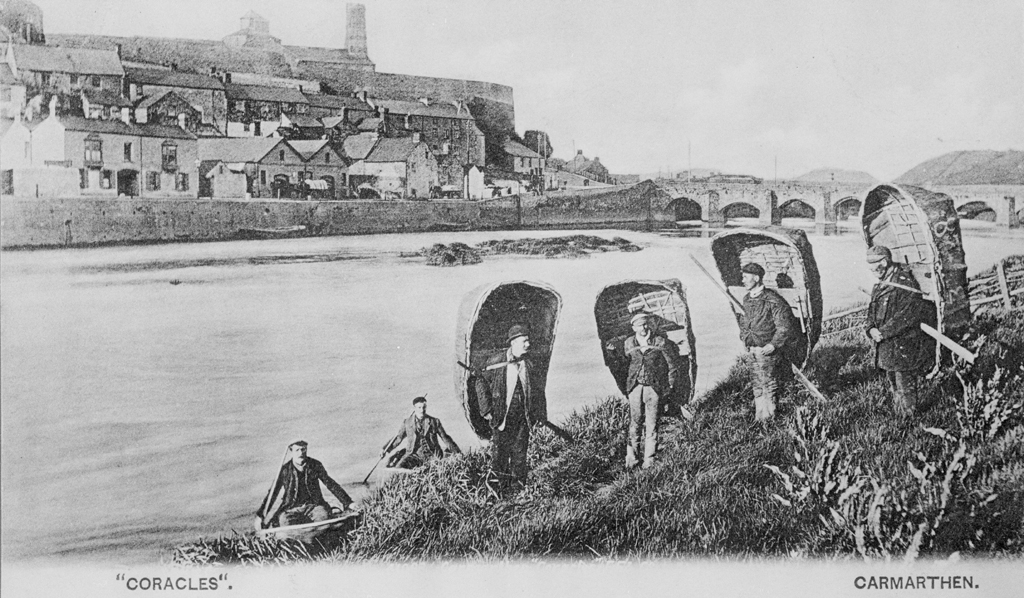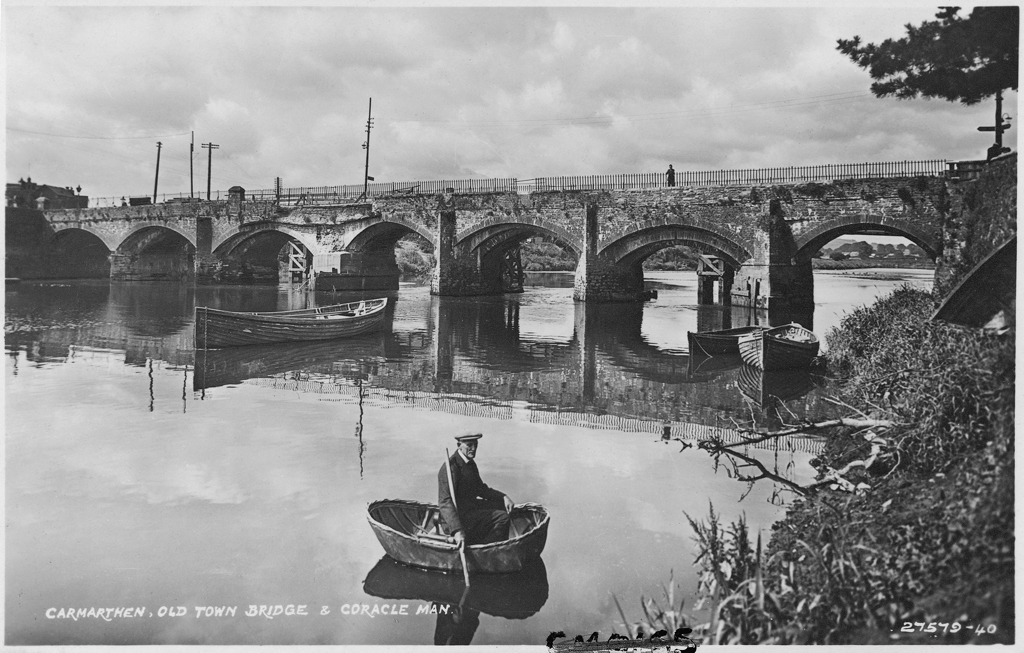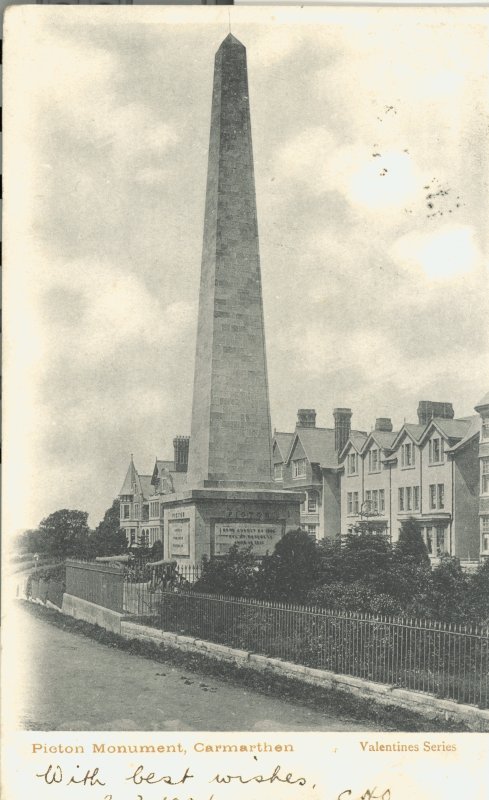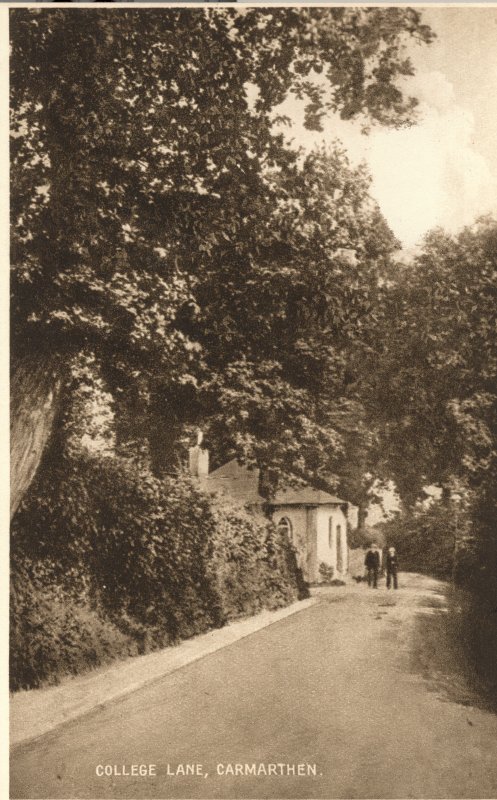Carmarthen - Overview
Situated on the river Towy, the town of Carmarthen has its roots in the Roman fort of Moridunum, built in 75CE and excavations have revealed the remains of civic buildings and an amphitheatre.
Welsh tradition refers to an individual named Myrddin, famed for his prophetic poetry, who gave his name to the town, known in Welsh as Caerfyrddin, Myrddin’s Fort. He is probably the inspiration behind the figure of Merlin, famed in Arthurian legend, who Geoffrey of Monmouth writing in his History of the Kings of the Britain in 1138, claimed came from Carmarthen.
The River Towy that flows past the town is famed for its coracle fishermen. The coracle is a small, canvas-covered boat allowing space for one person and must also be light enough to be carried. Descriptions and drawings of these small boats survive as far back as the twelfth century.
In the Romantic period, their continued use by the local fishermen came to be regarded a historical oddity. Tourists such as the German journalist Francis Broemel payed tribute to the great dexterity of the coracle fishers of Carmarthen: steering the small boats, catching fish and returning on land dry looks much easier than it is! There are only a few coracle fishermen still active in Carmarthen today, but after years of hard campaigning, the European Commission officially recognised their craft and coracle-fished sewin (a type of trout) was awarded Protected Food Name status in 2017.
Accounts of Travel
Nordland-Fahrten. Zweite Abteilung, c. 1870s
Franz Brömel (1829 – 1904)
In Caermarthen, der Fischerstadt von Wales, begegnet man überall dem Rüstzeuge dieses Gewerbes, das ein Philosoph zugleich mit dem Ackerbau als die edelste Beschäftigung des Menschen bezeichnet hat. Die Leute von Caermarthen sind wegen ihrer Schwimmfertigkeit ebenso berühmt, wie die Hydrioten in Griechenland, und nicht minder wegen ihrer Ruderkunst. Eine eigenthümliche Art von Boot, das coracle, welches wie die Seebote der Eskimos aus Fellen gefertigt sind, aber in der Gestalt sich von ihnen unterscheidet, ist hier im täglichen Gebrauch. Es hat eher die Gestallt eines schwimmenden Waschtrogs, ist beinahe ebenso breit als lang, aber von großer Leichtigkeit, aus nichts als einer Art Korbgeflecht bestehend, das mit geteertem Leder überzogen ist. Es hat nur für Einen Raum, wird mit einem Ruder im raschen Kreisen, wohl eine deutsche Meile [ca. 7.5 km] in der Stunde, vorwärts getrieben, erfortert jedoch beträchtliche Gewandtheit, um dabei das Gleichgewicht zu bewahren und ein unfreiwilliges Bad zu vermeiden. An das Ufer zurückgekehrt, schnallt er Fischer sich sein Boot auf dem Rücken und trägt es nach Hause.
In Carmarthen, the fishing town of Wales, one encounters the accoutrements of a trade which, together with husbandry, a philosopher once called humanity’s most noble of undertakings. The people of Carmarthen are famed for their ability to swim, similar to the Hydriots in Greece, as much as for their rowing skills. Used daily, the coracle is a peculiar type of boat which is entirely constructed of skin similar to the boats of the Eskimo, but differs in its shape. It rather resembles a washing trough, is nearly as wide as it is long, but of great lightness, and consists of nothing more than wickerwork covered with tarred leather. It only seats one person, is steered with a quickly rotating oar and may cover up to a German mile [ca. 7.5 km] within one hour, but demands considerable skill in keeping one’s balance in order to prevent an involuntary bath. Once returned to the bank, the fisher ties his boat to his back and carries it home.
Neueste Reise durch England, Schottland und Ireland, 1805
Philipp Andreas Nemnich (1764 – 1822)
In Caermarthen sah ich ein ganz besonderes Fahrzeug, dessen man sich zum Lachsfang bedient. Vorn ist es breit, hinten zugerundet; das Ganze korbförmig, oder wie eine Wallnußschale. Das Geripp ist von starken Weidengerten, und mit wasserdicht gepichtem Kannefaß oder Flanell überzogen. ... In der Mitte ist eine Sitzbank, und ein lederner Riemen daran, um den kühnen Schiffer festzubinden. Das Zubehör besteht aus einer Ruderstange, einer kleinen hölzernen Keule, um den Lachs, im Begegnen, auf den Kopf zu schlagen, und einer kleinen hölzernen Schüssel, um im Nothfall das Wasser auszuschöpfen. Das Ganze kostet 25 bis 30 Shill. St., und ist so leicht, daß der Fischer es auf seinen Schultern, mittelst desselben bereits gedachten Riemens, trägt. Oft wagt er sich damit 30 Meilen weit, und benutzt es ebenfalls, um Treibholz einzuholen. Dies Fahrzeug wird Coracle, und auf Welsh, Cotwg, oder Corwgl, genannt. Die Eingebohrnen haben ein kurzes Sprichwort: Llwyth gwr ei corwg, das heißt, der Coracle eines Mannes muß so schwer seyn, als er ihn nur tragen kann; sonst wird der Coracle den Mann nicht tragen können.
In Carmarthen, I encountered a very special vessel that is used for catching salmon. It is broad in the front and rounded in the back; the whole is shaped like a basket or like a walnut shell. The skeleton is made of sturdy willow switches and covered in watertight tarred canvass or flannel. ... In the middle, it holds a bench with a leather belt in order to strap in the bold skipper. The accessories consist of a long rowing oar, a small wooden cudgel for bashing the salmon over the head, and a small wooden bowl for scooping water in cases of emergency. The whole costs 25 to 30 Shillings and weighs so little that the fisher can carry it on his shoulders with the help of the aforementioned leather belt. The fishers frequently dare travelling up to 30 miles and use it for collecting drift wood as well. This vessel is called a coracle or, in Welsh, cotwg or corwgl. The natives have a short proverb: ‘Llwyth gwr ei corwg’, which means that a man’s coracle is supposed to be so heavy that he can still just carry it; else the coracle will not carry the man.
